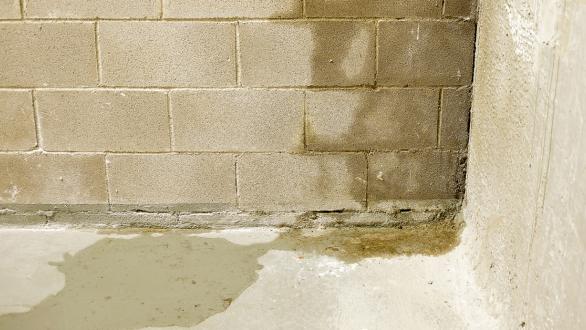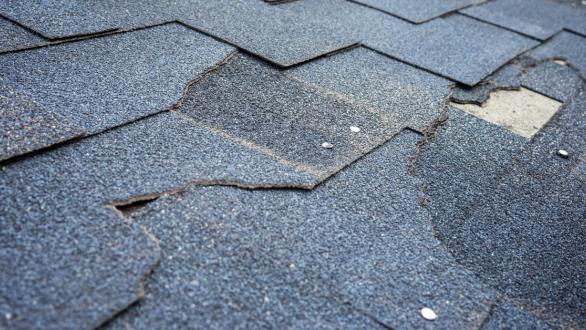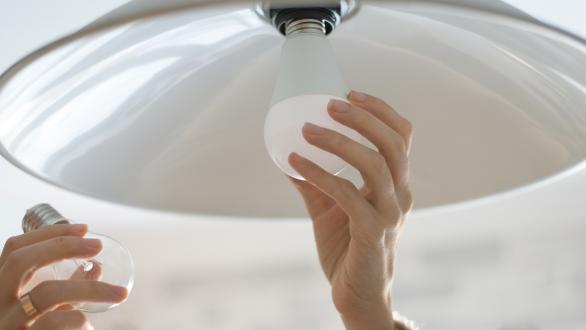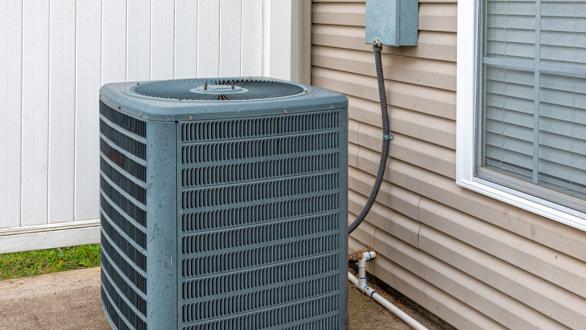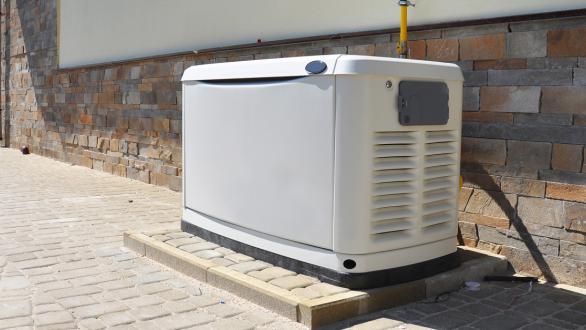3 Takeaways:
- First-time buyers should look beyond the shiny new kitchen and consider problematic signs in a listing.
- Chimney inspections can point out crumbling mortar and problems with flashings, flue liners, and the flue itself.
- Homes without good gutters and downspouts may have problems with interior leaks.
While low mortgage rates and the COVID-19 pandemic continue to motivate first-time buyers, other factors need to figure into their financial planning. Tight inventory markets mean many home shoppers will end up purchasing a house that requires repairs to its structure and mechanical systems, which will take a big bite out of their budget.
Real estate professionals can help first-time buyers look beyond the shiny new kitchen and sizable outdoor space and consider problematic signs, such as a leaky roof, cracked pipes, or inefficient air leaks. A thorough home inspection is good a start, yet, some buyers are willing to waive the inspection to make their offer more appealing to sellers in today’s competitive market. It’s an agent’s job to explain the risks involved when purchasing without an inspection.
All too often, homeowners—especially those buying a fixer-upper—focus on aesthetics, like gleaming subway tiles they plan to install along a kitchen backsplash or how they’ll transform a yard into a mediation retreat. They can’t forget about the issues that must take priority. Houses age just as people do, and they require regular checkups, repairs, and new parts, akin to our doctor visits, medications, and surgeries.
“So many homeowners buy a house for a lifestyle rather than for economic reasons, so they tend to think about the glitzy stuff rather than what’s behind the walls and sometimes not visible,” says Jennifer Ames, a salesperson with Engel and Volkers’ Chicago office.
While it’s less joyful to spend money on replacing a furnace or roof than updating an old bathroom or porch, it’s critical to do so to protect an investment. Due diligence can also help lower heating and cooling bills and pare down other costs. Encourage buyers to have specialists perform ongoing maintenance and instruct them not to put off repairs that may become more expensive if left untended. Some might even lead to health issues, such as mold, says Frank Wickstead, director of project delivery at Atlanta-based Jones Pierce Studios, an architecture firm.
Share the following checklist with your first-time buyers to help them tackle critical improvements first. One caveat: They should find the right specialists to help them complete the work, says Jonathan Miller, founder of New York-based Miller Samuel Real Estate Appraisers & Consultants.
“Take your time and find the right person at the right price by always getting three bids,” Miller says.
1. Keep away rain. Climate changes have brought heavy rains and storms to more parts of the country, and homes without good gutters and downspouts may have problems with interior leaks and standing water in the yard.
A home’s gutters should be pitched away from the house and be wide enough to carry water without leaves getting clogged—ideally 6 inches rather than the traditional 4 inches.
Downspouts should extend 5 feet from the home’s foundation so water won’t collect near the home and leak inside, potentially causing mold, says Wickstead, who also teaches at Georgia Tech’s College of Design.
Sometimes, a French drain might be attached to the downspout to carry the water farther from the house, says architect Nathaniel Kipnis, of Kipnis Architecture + Planning, in Evanston, Ill., and Boulder, Colo.
Gutters should be cleared annually or semi-annually. An expert should periodically check wood fascia boards behind gutters, which may rot over time. Kipnis prefers using a cementitious material for that reason. He also suggests installing a drip edge to the roof’s plywood decking to keep water from getting underneath. In addition, the landscape should be regraded if the yard slants downward toward the house.
2. Tighten the envelope. Homes that are not well sealed allow warm air to escape in winter and cool air in summer. It also makes it easier for bugs and rodents to find their way inside. Wickstead recommends hiring an expert from the nonprofit Building Performance Institute to perform an assessment; the group’s website offers names of contractors by zip code. The assessment provides a number that indicates how leaky a house is, and directs a homeowner to undertake changes, such as using caulk to seal around windows, air ducts, and areas where the walls meet the foundation. In addition to lowering energy costs, this also prevents pollutants and humidity from entering the home.
Ames also suggests looking at several years of energy bills to gauge how well the home has been insulated.
“Insulating a space doesn’t have to be expensive and might range between $2,000 and $5,000,” Wickstead says. Historically, most homeowners who add insulation choose foam or mineral wool, but many building codes now require tighter envelopes, so the industry is moving toward blown-in rockwool, fiberglass, and cellulose, Wickstead says.
Another way to keep out insects and rodents is to use inert pesticides like boric acid, which Wickstead prefers.
3. Maintain a stable foundation. Cracks in a foundation require prompt attention so they don’t spread and cause more severe problems. Cracks develop for all sorts of reasons, from climate fluctuations to age to land sloping toward the house. A structural engineer should be hired to do an assessment and help the homeowners develop a solution, such as waterproofing a basement and foundation down to the footings or installing a sump pump and battery backup system to remove future water. Telltale signs of a wet basement may be stains on walls or bad odors from moisture, Kipnis says.
4. Inspect the roof. Unless it’s a simple case of a roof missing a few shingles, a home’s topmost layer can become an expensive repair if it’s old or badly damaged. Buyers should ask sellers the age of the roof and how it was constructed. The best shingle roofs also have a good underlayment and decking underneath.
Flashing, a plumbing stack, chimneys, and skylights should also be inspected before purchase because rain, animals, and debris can find their way into openings, Wickstead says. A metal roof will last longer—50 to 100 years versus a shingle roof’s 30 years—but its costs can be four times higher, he says. Ames, who lives in a house, has found it useful to have an annual roof inspection to check for storm damage. Kipnis also advises homeowners to perform their own visual inspection by noting discoloration or curled or missing shingles.
5. Update lighting. Old incandescent lightbulbs increase energy costs and have a short life span. LEDs are an easy, affordable upgrade that require far fewer changes and are much more efficient. Wickstead suggests choosing LEDs with a 2,600 to 3,000 K (kelvin) measurement that produces a warm color, similar to 60-watt incandescent. Because LED bulbs come in a wide variety of shades, Kipnis suggests trying out one to see if it appeals before buying for an entire house. He also suggests avoiding compact fluorescent lights, which take time to warm up and can be overly bright, almost like a floodlight.
6. Add air conditioning. With much of the country experiencing more extreme heat, many new homeowners may find that fans aren’t sufficient to cool a home. Window AC units work, but don’t cool a house efficiently and are less visually appealing. A quality AC system will provide a good return on investment at resale, Ames says.
Wickstead prefers a split system to lower energy costs since each room can be separately controlled. However, the costs are greater than one central system—sometimes 50 percent more—though they will help save money over time. Some companies recommend adding an ultraviolet light system to kill mold, bacteria, and viruses from being circulated, which many homeowners have started to do since the onset of the pandemic.
7. Prepare for outages. Many experts believe electricity outages will continue to be a problem in certain parts of the country. Ames says a generator is a wise investment, especially if outages grow longer and more frequent. Homeowners can still benefit from the federal solar tax credit if they invest in a solar-battery backup system, Wickstead says.
A battery backup attached to a solar array could be connected to a single circuit to extend the life of the battery’s charge. On average, costs might run from $25,000 to $40,000. Less costly, but also less environmentally friendly, is a diesel generator system, which may run between $18,000 and $22,000 for a 3,000-square-foot home, or $5,000 to $8,000 for a smaller unit that powers kitchen appliances and some lights. Besides cost, it works for longer periods without needing to be recharged like a solar system.
8. Maintain wood. Wood adds charm to a home, whether through siding, flooring, railings, or a deck. But it also requires regular maintenance. Boards—even new ones—can rot due to weather and insects. Another culprit is the type of wood used today. A century ago, the center of trees was used for boards, which made them sturdier than today’s wood planks that are made from the entire tree and its pulp. That means they also carry more moisture, and therefore rot faster, Wickstead says. He recommends pressure washing a house to remove mold. Kipnis suggests sealing wood well with quality paint.
9. Remember tree care. Trees are a beautiful addition to a property, providing shade in summer and picturesque snow-covered branches in winter. But they should not be overlooked by homeowners when it comes to their care. Big limbs may come down during storms, insects can feast on wood, and spreading tree roots may clog sewers, Wickstead says. New homeowners should hire an arborist to examine their site’s trees when they move in and have limbs pruned periodically. Diseased trees should be promptly removed to prevent spread. Two sources for finding an arborist are International Society of Arboriculture and American Society of Consulting Arborists.
5 Steps for a Healthier Home
-
Check appliance exhaust systems. Fossil fuel–based heating units, fireplaces, and cooking appliances should have tightly sealed exhausts that lead directly outside. Low-level carbon monoxide poisoning over a long period can cause headaches, malaise, and achiness.
-
Add a stand-alone carbon monoxide detector near gas appliances. Natural gas does not rise or fall, so detectors on the ceiling may not be effective enough. Install them at chest level within the mechanical closet or near a fuel-burning appliance.
-
Test for radon. Radon is the second leading cause of lung cancer, according to the Environmental Protection Agency. This is an inexpensive but important fix with the help of a local radon expert.
-
Clean crawl spaces. This will help avoid long-term wetness and mold. Encapsulation is a process that brings the crawl space into the building envelope and will remove moisture, insulate exterior walls, and introduce a sealed material over the floor and walls of the crawl space.
-
Avoid carcinogens. Some cleaning products, scented aerosols, and furniture finishes can introduce carcinogens to a home’s indoor environment. Check that a product (particle board, carpet, paint, etc.) is GREENGUARD/SPOT certified. The Environmental Working Group website is a good resource for healthy products.
*From Frank Wickstead, director of project delivery, managing partner, Jones Pierce Studios, Atlanta






